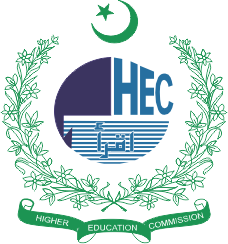Pakistan’s Regional Integration via Shared Economic Vision: Prospects and Challenges
DOI:
https://doi.org/10.63062/trt/V24.019Keywords:
Regional Integration, Shared Economic Vision, Pakistan and Geoeconomic, TAPI, CASA-1000, CPECAbstract
Regional cooperation is essential for economic development in a world characterized by complex interdependence. The phenomenon of regional integration is very common these days, and the world witnesses various regional organizations, treaties, and agreements to ensure the optimal utilization of regional collective resources. This indicated that the future is in collective growth. Pakistan also focused on its regional integration lately. It has undergone a shift in its foreign policy from a security-centric state to economic initiatives commonly known as its Shared Economic Vision. This major shift in policy was observed after the capstone economic project of Pakistan CPEC in 2015, which was later confirmed by its National Security Policy (NSP) in 2022. Regional integrations can help countries to overcome the challenges of globalization and to reap the benefits of economic growth and development. Countries can promote regional cooperation by establishing regional trade agreements and regional infrastructure projects and cooperating on security and other issues. In this regard, this paper focuses on the importance of Pakistan's regional integration and the different projects/integrations it is undergoing to enhance its regional integration.
References
Abbas, Z., Afridi, M. K., & Kalim, I. (2018). Mitigating Challenges of CASA-1000 for Greater Regional Cooperation. Global Regional Review, 3(1), 91–106. https://doi.org/10.31703/grr.2018(iii-i).07
Abbas, Z., Kalim, I., & Shoaib Malik, M. (2019). CASA-1000: ITS POTENTIAL FOR REGIONAL TRADE AND DEVELOPMENT. Global Political Review, IV(III), 39–48. https://doi.org/10.31703/gpr.2019(IV-III).05
Ahmad, I., & Rafiq, A. (Eds.). (2016). Pakistan's democratic transition: Change and persistence. Taylor & Francis.
Ahmad, M., & Farooq, U. (2010). The State of Food Security in Pakistan: Future Challenges and Coping Strategies. The Pakistan Development Review, 49(4II), 903–923. https://doi.org/10.30541/v49i4iipp.903-923
Ahmed, S., & Ghani, E. (2008). Making Regional Cooperation Work for South Asia’s Poor. Policy Research Working Paper 4736.
Ali, Y., Ahmad, M., Sabir, M., & Shah, S. A. (2021). Regional development through energy infrastructure: A comparison and optimization of Iran-Pakistan-India (IPI) & Turkmenistan- Afghanistan-Pakistan-India (TAPI) gas pipelines. Operational Research in Engineering Sciences: Theory and Applications, 4(3), 82–106. https://doi.org/10.31181/oresta091221082a
Altaf, M. (2022). Pooling Regional Energy between China, Iran, Pakistan, Turkey, and Russia. Policy Perspectives, 19(1), 35–64. https://doi.org/10.13169/polipers.19.1.ra2
Anwar, S. U., Wuyi, Z., Ali Shah, S. Z., Ullah, Q., Amir, S. M., & Syed, A. (2022). The resilient economic impact of CPEC and future of MNCs: Evidence from Pakistan. Frontiers in Environmental Science, 10. https://doi.org/10.3389/fenvs.2022.912975
Bhat, M. A. (2014). America and Iran-Pakistan-India (IPI) Gas Pipeline. African Journal of Political Science and International Relations, 8(8), 260–265. https://doi.org/10.5897/ajpsir2014.0696
D’Souza, S. (2011, April). The TAPI Pipeline: A Recipe for Peace or Instability? Ssrn.com. https://papers.ssrn.com/abstract=2154964
Easterly, W. (2003). The political economy of growth without development. Search of prosperity: Analytic narratives on economic growth, 439–469.
Ismail, M., Hassan, T. U., Haq, A. U., & Mir, W. (2023). China-Pakistan Economic Corridor (CPEC): A Case Study of Strategic Implications for Pakistan. PalArch's Journal of Archaeology of Egypt/Egyptology, 20(2), 346–355.
Javaid, U., & Javaid, R. (2016). Strengthening geo-strategic bond of Pakistan and China through geo-economic configuration. Pakistan Economic and Social Review, 54(1), 123–142. https://www.jstor.org/stable/26616702
Javed, H. M., & Ismail, M. (2021). CPEC and Pakistan: Its Economic Benefits, Energy Security and Regional Trade and Economic Integration. Chinese Political Science Review, 6(2), 207–227. https://doi.org/10.1007/s41111-020-00172-z
Kanapiyanova, Z. (n.d.). Turkmenistan-Russia Energy Cooperation in the Context of Natural Gas Trading. https://www.eurasian-research.org/publication/turkmenistan-russia-energy-cooperation-in-the-context-of-natural-gas-trading/
Khalique, M., Ramayah, T., Hina, K., & Abdullah, F. (2019). CPEC and Its Potential Benefits to the Economy of Azad Jammu and Kashmir, Pakistan. Palgrave Macmillan Asian Business Series, 117–130. https://doi.org/10.1007/978-3-030-18959-4_6
Khan, A. U. (2015). Pak-China economic corridor: The hopes and reality. Regional studies, 33(1), 7–13. https://irs.org.pk/journal/1RSWinter14-15.pdf#page=45
Khan, N., Ray, R. L., Kassem, H. S., Hussain, S., Zhang, S., Khayyam, M., Ihtisham, M., & Asongu, S. A. (2021). Potential Role of Technology Innovation in Transformation of Sustainable Food Systems: A Review. Agriculture, 11(10), 984. https://doi.org/10.3390/agriculture11100984
Khan, S. M. (1980). Pakistani Geopolitics: The Diplomatic Perspective. International Security, 5(1), 26–36. https://doi.org/10.2307/2538472
Kumar, N. (2015). Potential and Prospects of Strengthening Transport Connectivity for Regional Economic Integration in Southern Asia. South Asia Economic Journal, 16(2_suppl), 39S-54S. https://doi.org/10.1177/1391561415594894
Lancaster, A. W., & Tran, T. Q. (2018). Iranian Natural Gas: Opportunities And Risks [Doctoral dissertation, Monterey, CA; Naval Postgraduate School].
Ormushev, K. (2012). Politics of CASA 1000 [Doctoral dissertation].
Rathore, M. P. K., Mahesar, D. M. A., & Rathore, M. H. (2024). Pakistan and Global Economy. Al-NASR, 79–98. https://doi.org/10.53762/alnasr.03.01.e06
Sahay, A., & Roshandel, J. (2010). The Iran–Pakistan–India Natural Gas Pipeline: Implications and Challenges for Regional Security. Strategic Analysis, 34(1), 74–92. https://doi.org/10.1080/09700160903354815
Saira, B. (2022). Turkmenistan Afghanistan Pakistan India Gas Pipeline and Foreign Policy of Pakistan. Journal of Development and Social Sciences, 3(IV), 290–298. https://doi.org/10.47205/jdss.2022(3-iv)28
Saleem, A. H. (2018). Central and South Asian Energy Projects: Prospects and Challenges for Pakistan. Strategic Studies, 38(3), 57–71. https://doi.org/10.53532/ss.038.03.00144
Yildirim, A. (2023). The Idea of Transmitting Central Asian Energy through Afghanistan: TAPI Natural Gas Pipeline Project. Eskişehir Osmangazi Üniversitesi Sosyal Bilimler Dergisi, 24(2), 362–380. https://doi.org/10.17494/ogusbd.1245451
Downloads
Published
Issue
Section
License
Copyright (c) 2024 Muhammad Mehran Iqbal, Danish Raza, Abdul Qadir

This work is licensed under a Creative Commons Attribution-NonCommercial 4.0 International License.



